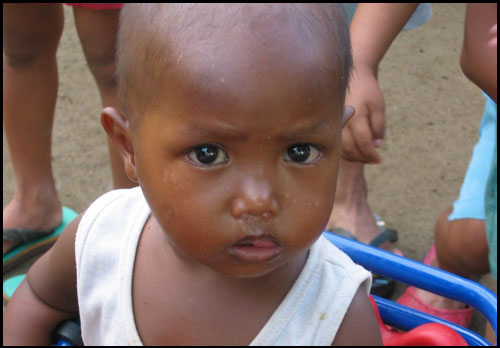Long Distance Adoption

The Need: UNICEF states that poverty reduction starts with children. Poverty is transmitted from one generation to the next. Spending on a child's health, nutrition, education, and social, emotional and cognitive development, and on achieving gender equality, is an investment in a more democratic and equitable society. It is also an investment in a healthier, more literate and, ultimately, more productive population.
Project Description: Improving the everyday life of children through Long Distance Adoption. Giving the possibility to needy children to grow with dignity in their own culture and surroundings by providing basic needs such as food, medicine and education.
What is Long Distance Adoption?
How much does it cost?
What do you receive?
Long Distance Adoption Application Form
To view and read some success stories, please click here
What is Long Distance Adoption?
Long Distance Adoption is an act of love. Distant adoption improves the everyday life of children giving them the possibility to grow with human dignity in their own culture and surroundings, and, wherever possible, surrounded by the love of their family members.
It provides the basic needs for a child such as food and medicine, that in affluent societies are taken for granted. In this way, a small contribution towards long distance adoption is an effective way of reducing poverty and hunger in the world.
Long Distance Adoption provides the privilege of becoming directly involved in a person's life living in another continent and tracing his or her growth and development through the exchange of letters, photos, and experiences.
Long distance adoption through hopeXchange is possible from various countries in Asia and Africa. Long distance adoptions are part of the hopeXchange development programme run locally by staff members and volunteers.
This development programme aims at giving the child, the family and the community a better future. Your contribution will go towards food, medicine and schooling for the child so that he or she can be better equipped to contribute towards a better quality of life for her family and community.
How much does it cost?
If you choose to sponsor a child, the cost is just Euros 25 a month or $1 a day. HopeXchange can give tax deductible receipts in Italy. The payment will be carried out according to the scheduling you choose in the application form.
This adoption doesn't imply any juridical or legal obligation neither on the part of the "adoptive parent/s" nor on that of the adoptee.
What do you receive?
Please fill in and send the form below. Once the first payment has been made, you will receive anagraphical data and a brief personal biography of the child, plus a photograph. Twice a year, you will be kept updated with news about the child.
Long Distance Adoption Application Form
If you desire more information about Long Distance Adoption or have any other questions, contact us at: rome@hopexchange.net
|

